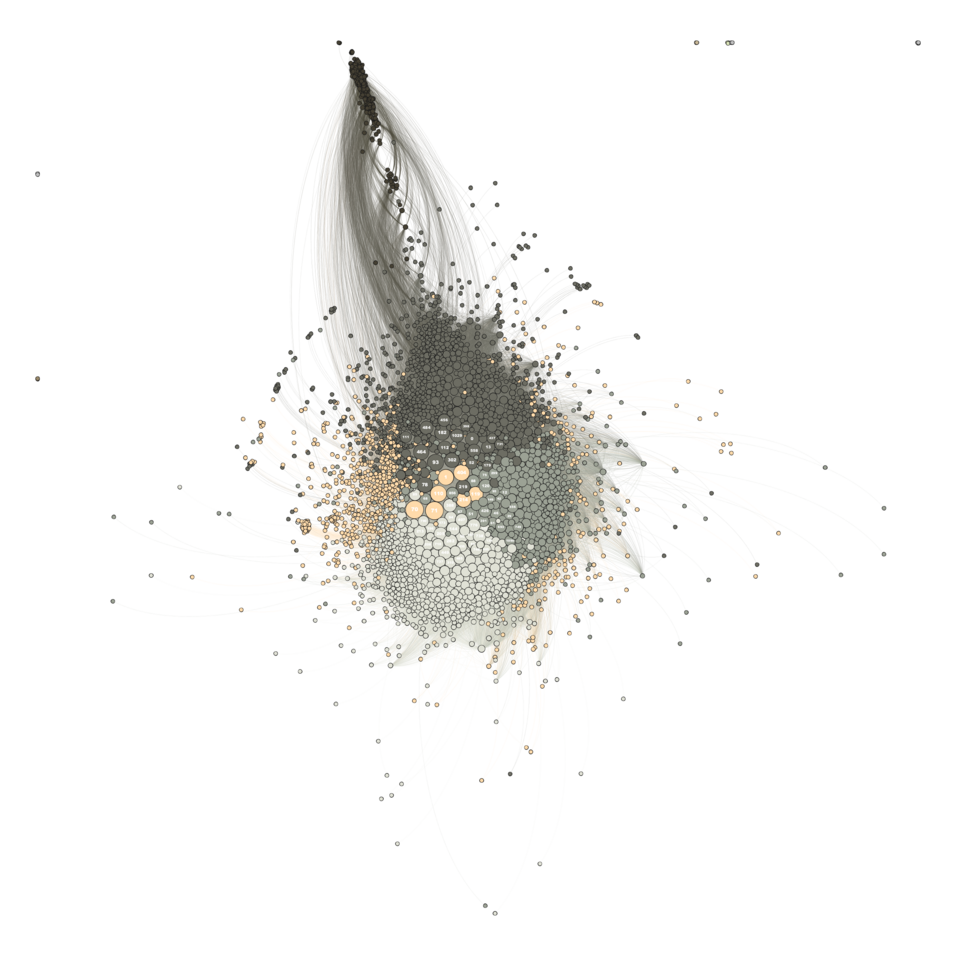The academic journal New Media & Society has published a paper titled "Protest and repression on social media: Pro-Navalny and pro-government mobilization dynamics and coordination patterns on Russian Twitter", written by Aytalina Kulichkina, Nicola Righetti, and Annie Waldherr. The paper explores connective protest mobilization and suppression during the 2021 protests in Russia, focusing on the interplay between the pro-Navalny movement and the pro-government countermovement on Twitter.
The authors conceptualized and examined protest-related connective action and counteraction in an authoritarian context, applying Bennett and Segerberg's (2013) connective action framework. Using time series analysis, they first analyzed the dynamic interplay between Twitter activities of pro-Navalny and pro-government accounts and how these relate to offline protest events. Second, they focused on coordination as a main structural characteristic of connective action and analyzed co-retweeting networks of pro-Navalny and pro-regime accounts, thereby distinguishing three related but distinct aspects of coordination: synchronization, centralization, and modularity.
Findings show that pro-Navalny accounts were significantly more active and coordinated within more centralized Twitter networks than pro-government accounts. Contrarily, the pro-government camp employed preventive communication tactics and coordinated in more clustered networks. Granger causality tests reveal that pro-Navalny tweeting activity triggered increased pro-regime reaction during the largest protests on January 23 and April 21, whereas pro-government tweeting activity caused the escalation of pro-Navalny reaction during the February 14 protests. Both sides' tweeting activity decreased after the February protests, presumably due to external repression.
These findings contribute to a deeper understanding of online mobilization and coordination strategies via social media in authoritarian contexts. The authors conclude that while digital repression may sometimes succeed in marginalizing oppositional voices, the findings suggest that in 2021, the opposition was notably more vocal on Twitter compared to their pro-government opponents, prompting targeted coordinated digital repression. The authors stress that we need reliable access to social media data to continue studying social movements and countermovements, polarization dynamics, and the spread of disinformation in authoritarian contexts and beyond using similar methods.
Find the full open-access paper here: doi.org/10.1177/14614448241254126
Cite article:
Kulichkina, A., Righetti, N., & Waldherr, A. (2024). Protest and repression on social media: Pro-Navalny and pro-government mobilization dynamics and coordination patterns on Russian Twitter. New Media & Society, 0(0). doi.org/10.1177/14614448241254126

